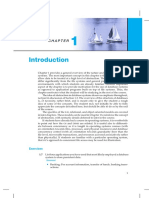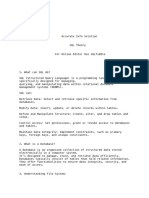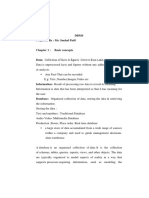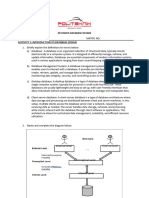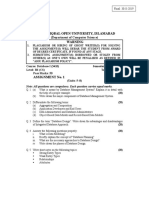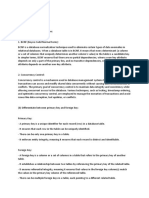0% found this document useful (0 votes)
9 views7 pagesHHHHH
The document contains exercises related to database systems, focusing on comparisons between file-processing systems and DBMS, challenges in database schema design, and the implications of physical data independence. It discusses the advantages and disadvantages of different architectures, relational algebra expressions for queries, and the importance of foreign key constraints. The exercises encourage critical thinking and analysis of database concepts, with real-world examples provided throughout.
Uploaded by
margaritamakashi15Copyright
© © All Rights Reserved
We take content rights seriously. If you suspect this is your content, claim it here.
Available Formats
Download as DOCX, PDF, TXT or read online on Scribd
0% found this document useful (0 votes)
9 views7 pagesHHHHH
The document contains exercises related to database systems, focusing on comparisons between file-processing systems and DBMS, challenges in database schema design, and the implications of physical data independence. It discusses the advantages and disadvantages of different architectures, relational algebra expressions for queries, and the importance of foreign key constraints. The exercises encourage critical thinking and analysis of database concepts, with real-world examples provided throughout.
Uploaded by
margaritamakashi15Copyright
© © All Rights Reserved
We take content rights seriously. If you suspect this is your content, claim it here.
Available Formats
Download as DOCX, PDF, TXT or read online on Scribd
/ 7


